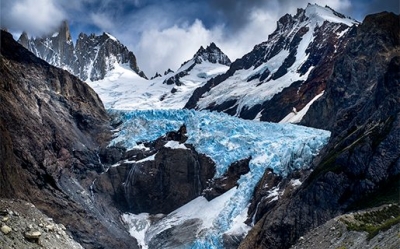What are Glaciers?

A glacier is a huge river of ice that forms when thick layers of snow fall on top of each other and are pressed together. Most glaciers form high up in mountains, where it’s so cold that any snowfall never melts. They are found all around the world, usually in polar and mountainous regions.
Most of the world's glacial ice is found in Antarctica and Greenland, but glaciers are found on nearly every continent, even Africa. Because certain climatic and geographic conditions must be present for glaciers to exist, they are most commonly found above snow line: regions of high snowfall in winter and cool temperatures in summer. This condition allows more snow to accumulate on the glacier in the winter than will melt from it in the summer. This is why most glaciers are found either in mountainous areas or the Polar Regions. However, snow line occurs at different altitudes: in Washington State the snow line is around 1,600 meters (5,500 feet), while in Africa it is over 5,100 meters (16,732 feet), and in Antarctica it is at sea level. The amount of snowfall a glacier receives is very important to its survival, which is why some cold regions, like Siberia, have almost no glaciation—there is not enough snowfall.
Picture Credit : Google
Comments
No comments